Everything you need to know about cooking with pears, including a breakdown of the different pear types.
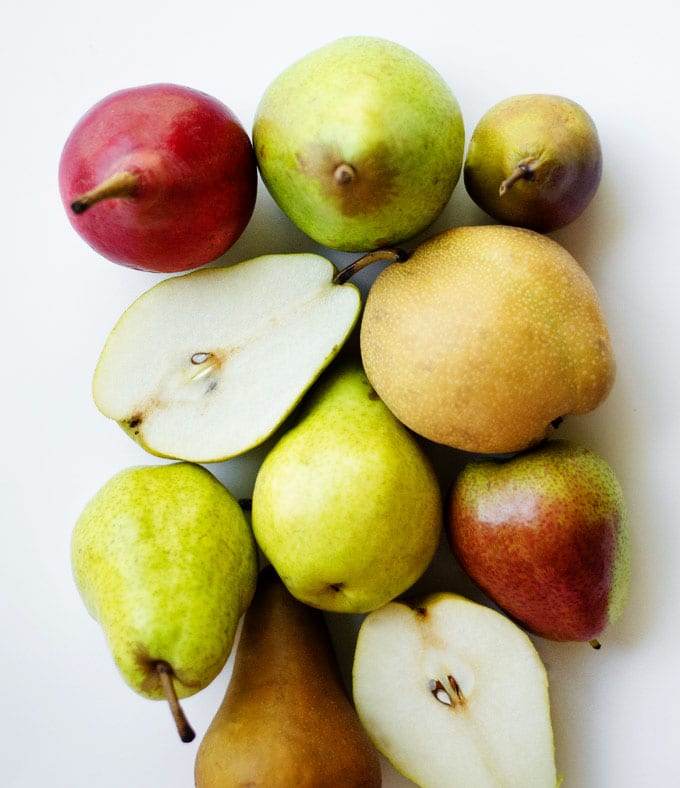
Until recently, I’d naively gone through life thinking there were just one or two types of pears. I mean I’d never really sought out pears for cooking, so how was I to know? But you know what? There are so many pear types. It made my brain hurt, just looking at them all sitting there at my grocery, me not knowing which to choose. So I bought them all (much to the love of the cashier), and did a little write up for each under “Pear Types”. Hope it saves ya the brain hurt.

How to pick the perfect pears
Pears are in their peak harvest (in North America and much of the northern hemisphere) from August to November, but you’ll be able to find them through most of the winter months.
How do you know you’re picking a good one? Color at peak ripeness differs by type of pear, but look for one with few blemishes or scratches. To determine ripeness, apply gentle pressure to the neck of the pear. Pears ripen from the inside out, so a perfectly ripe pear will give a little bit at the neck. A pear that is squishy all around is probably too ripe.
Pear Types
There are hundreds of varieties of pears around the world (check out our comprehensive pear variety guide here!). Here are a few of the most common:
Anjou (d’Anjou): These pears are short, fat, and great eaten raw. There are 2 varieties:
- Green Anjou: Green and round, these are sweet and perfect for eating raw, though they also hold up well when cooked. These are popular in the U.S. and are pretty easy to find.
- Red Anjou: Just about like its green cousin, but red and a bit sweeter.
Asian: This one is a bit odd, and isn’t really pear shaped, colored, or tasting. It remains firm when ripe, with an almost crunchy interior. You can work this into most baked dished calling for pears, it can be enjoyed raw, and you could even trying substituting it for apples.
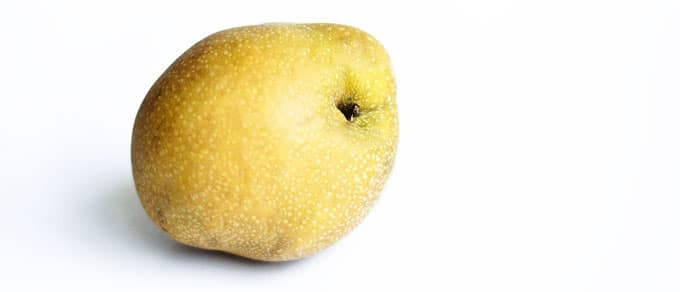
Green Bartlett: Green-ish, gold-ish, juicy, and great for baking, pureeing, or canning.
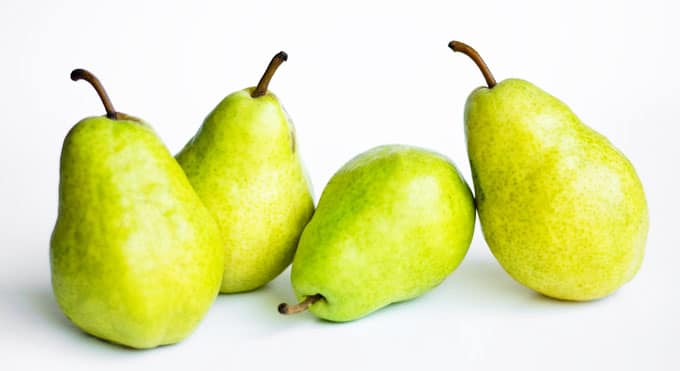
Red Bartlett: Similarly great for baking, pureeing, and canning, but this one is also pretty good raw as well.
Bosc: These are firm and hold up well under heat so they’re perfect for baking.

Comice: Sweet and great raw. Try it with a soft cheese like Brie or Camembert!
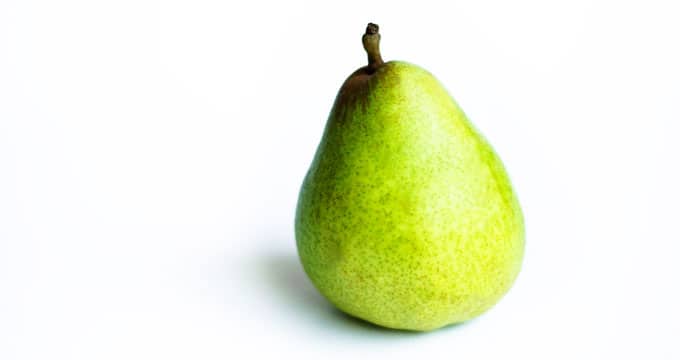
Conference: Long and greenish/brownish, this one is good raw or cooked.
Concorde: Good for just about everything. The flesh of these doesn’t oxidize/brown quickly when exposed to air, making them great raw in salads or on fancy cheese platters.
Forelle: This crisp, tart variety is green with red-speckled skin. Try it with a drizzle of honey!
Seckel: Ultra-sweet and perfect raw. This is a smaller pear, making it great packed in your lunchbox or canned whole.
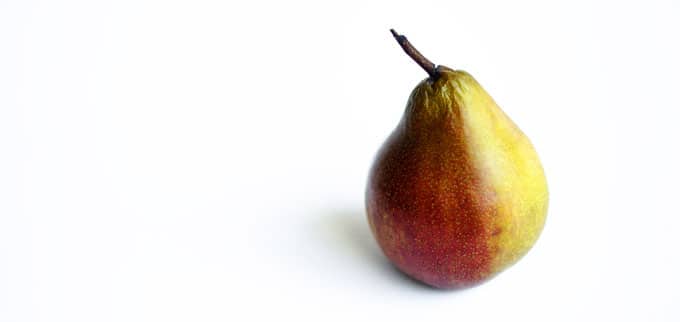
Stark Crimson: Bright red and a bit perfume-y. This one is better off baked than raw.
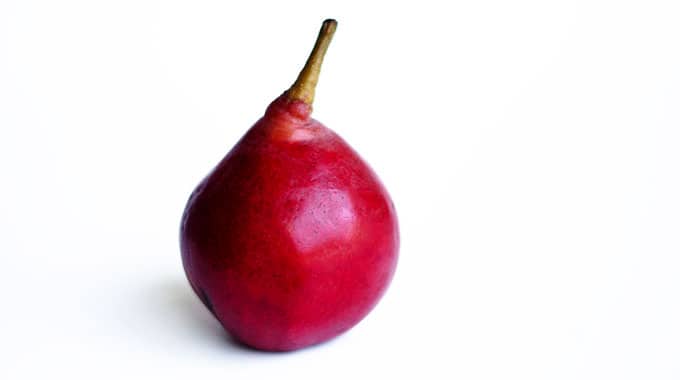
How to store pears
- Unripe: Stick your unripe pears in a brown paper bag and store at room temperature to speed up the ripening process. This helps to raise the concentration of ethylene gas, the compound contributing to ripening in many fruits.
- Ripe: Ripe pears should be stored in a plastic bag in the fridge.
Pear nutrition information
per 1 medium pear (178g)
- Calories: 103
- Carbohydrates: 28g
- Fiber: 6g, 22% Daily Value (DV)
- Protein: 1g
- Fat: 0g
- 12% DV of Vitamin C: A water-soluble vitamin that acts as an antioxidant to fight against potentially damaging free radicals (molecules with unshared electrons that float around wreaking havoc) and an important cofactor in collagen synthesis.
- 10% DV of Vitamin K: A fat-soluble vitamin that allows for activation of enzymes in the clotting cascade, which is responsible for blood clotting. Also builds bone by modifying osteocalcin so that it may bind calcium, thus building the bone matrix.
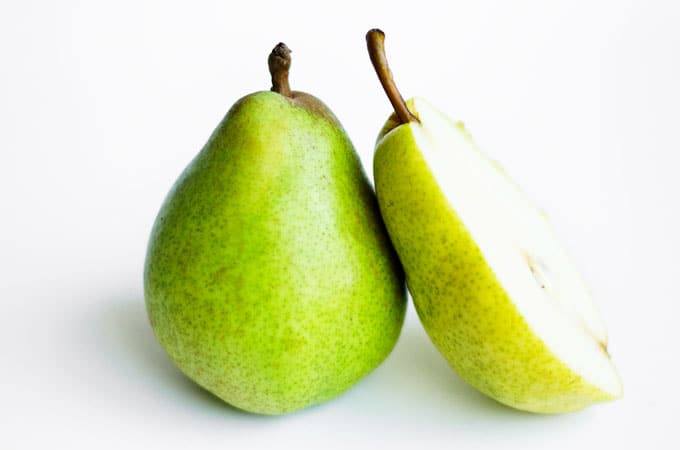
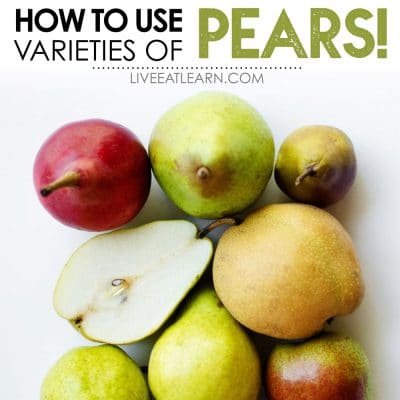
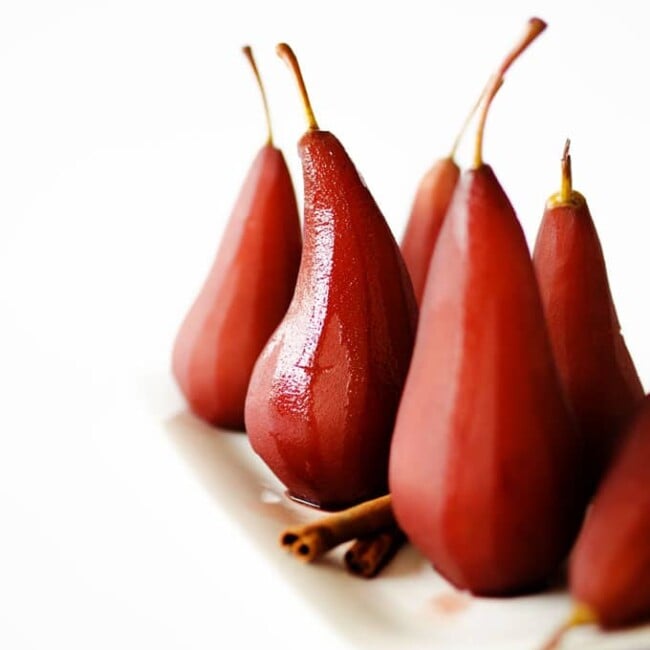
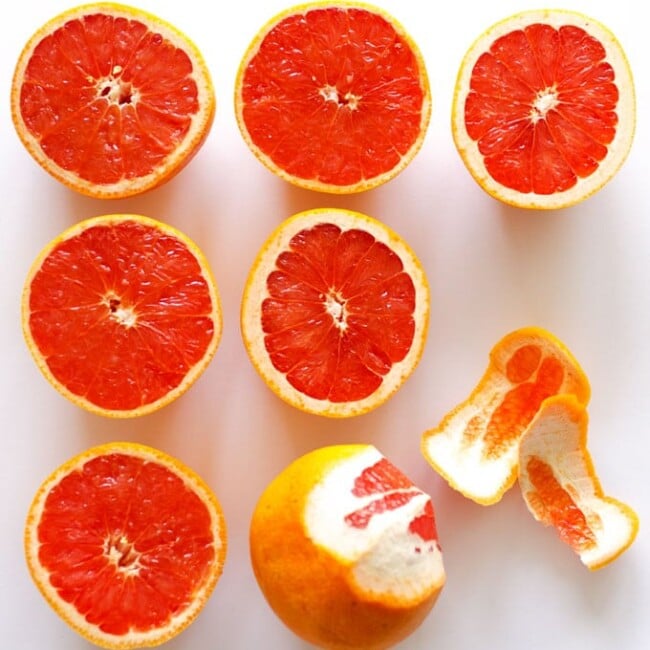
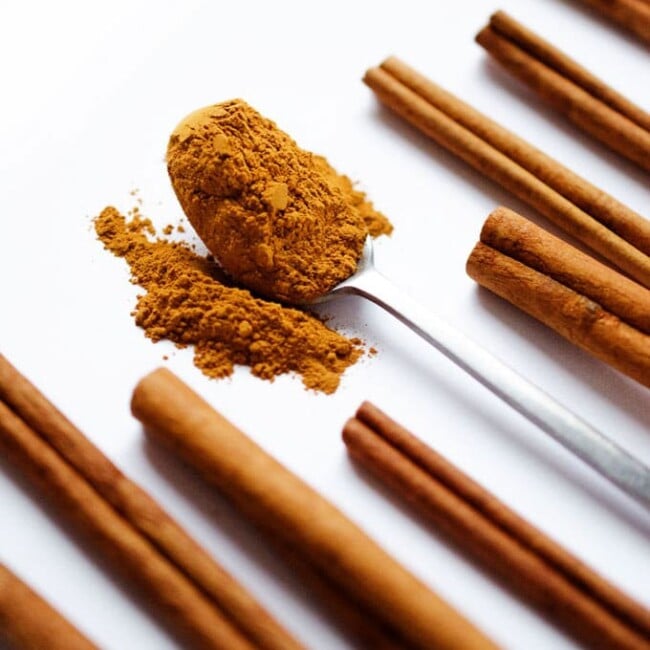
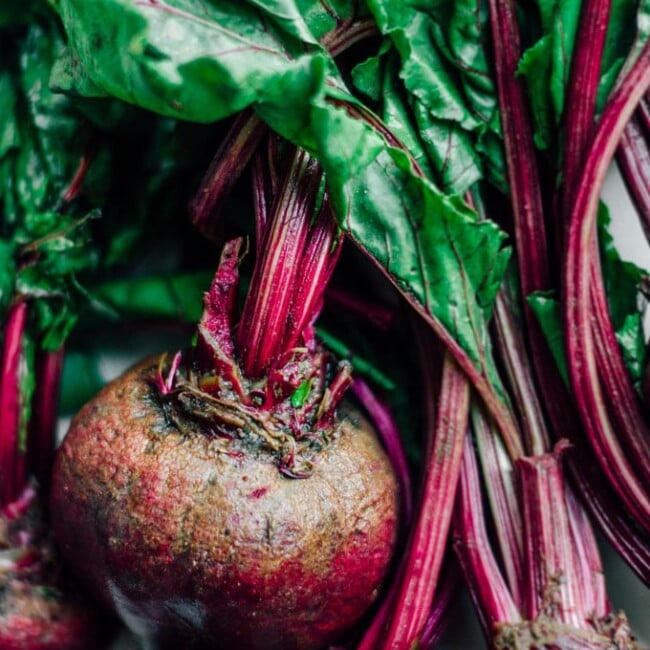
Tom says
You might want to mention that Asian Pears contain the meat tenderizing enzyme “calpain” and that the pear is always used in Korean barbecue recipes’ marinade for Galbi and Bulgogi.
Sarah says
Thanks for the tip, Tom! 😀
Valerie J Baker says
Hi I have a pear tree in my garden. I don’t recognize it my son brought it in a garden center. Last year I had a bumper crop. They are really big, are big at the bottom and taper at the top like the green barltlett in your picture but fatter at the bottom. It grows with a furry film over it and when ripe goes yellow. and the film comes off. It’s still hard and tastes sharp and not that nice. Is it a cooking pear do you think?. Last year I threw them all away as they didn’t go soft as I would expect from a normal pear. Thought I’d ask as don’t want to waste time cooking and using ingredients if they are not nice.
Sarah says
I’m not honestly sure, Valerie! They could be pears that are better for cooking. For those you would just need to cook them for longer (like poached pears). Best of luck!
Don Rudd says
Just read your post and it sounds like you have A quinch tree not a pear tree.